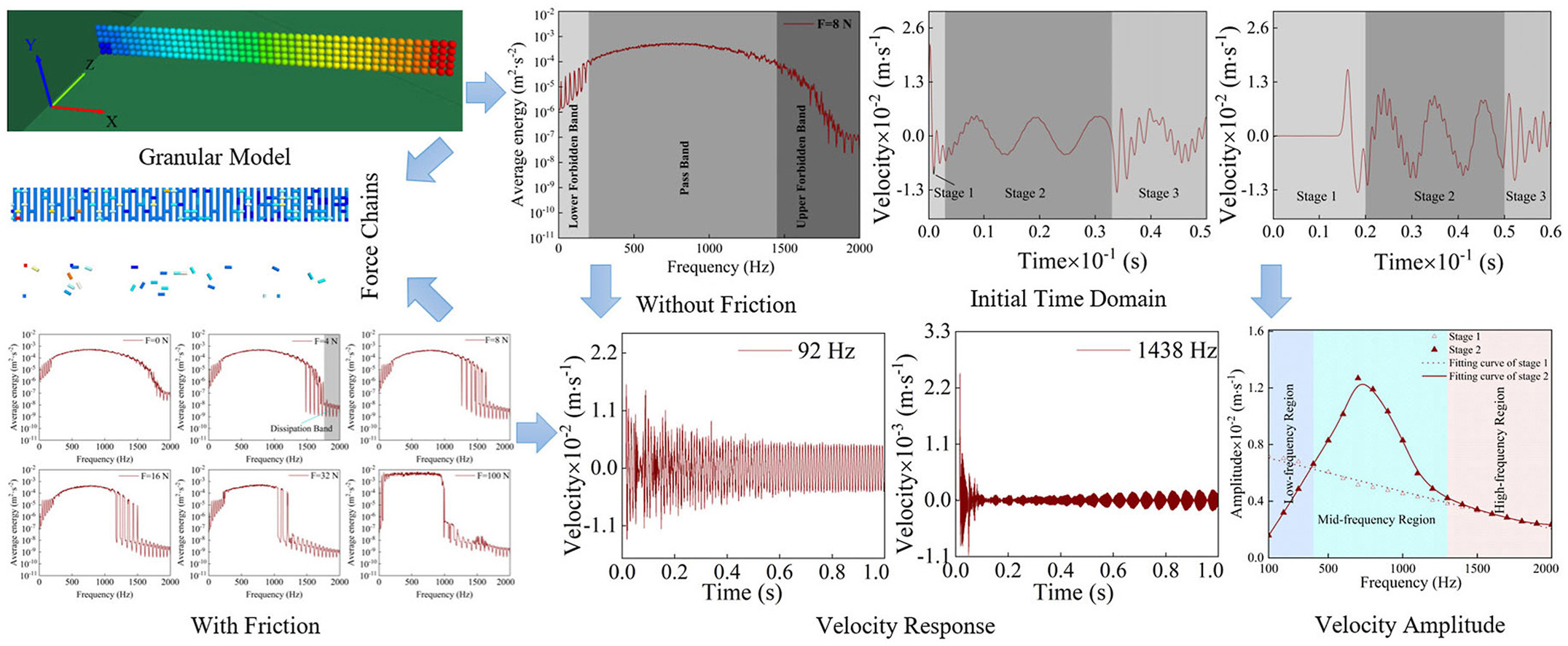• Friction can lead to stress wave dissipation band.
• Friction force exerts a powerful effect upon the bandwidth.
• The excitation frequency has an impact on the velocity amplitude.
• Increase of friction coefficient can result in an anomalous energy surge.
Nonlinear Supratransmission refers to the sudden large energy flow when a harmonic driving reaches a threshold amplitude in a system at a given frequency. In this work, supratransmission of stress wave in two-dimension ordered granular material is investigated by the Discrete Element Method (DEM). The abrupt change in spectrum distribution of stress waves can be utilized as a criterion to identify the occurrence of the supratransmission phenomenon, in which, the Lower Forbidden Band, Pass Band and Upper Forbidden Band can be clearly distinguished in the spectrum distribution diagram. The influences of friction coefficient and prestress on spectrum distribution have been expounded. The longitudinal prestress shows strong ability in adjusting the upper forbidden bandwidth. Moreover, in some frequency bands, the energy transfer efficiency increases sharply with the increase of the friction coefficient. Then, the research focus turns to the dissipation mechanism of stress waves in granular materials. According to the intensity of energy dissipation, the dissipation band is defined, in which a large part of the energy is dissipated. The coupling of the response and excitation of the boundary particles plays an important role in dissipation of stress waves. Compared with other structures, the square-packed granular material has more significant effect on the dissipation of stress wave. The results will provide new insights into the wave propagation behavior of granular materials.

